Night Stay On Qolsys IQ Panel 2 Plus
Related Products
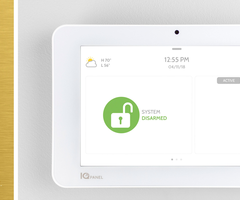

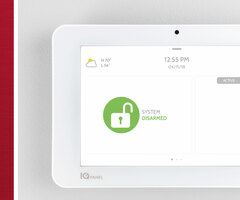
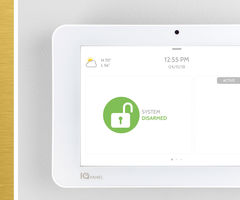
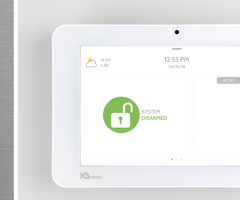
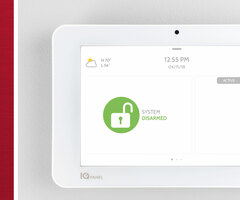
Description
In this video, Michael from Alarm Grid explains how there is no Night Stay option on the Qolsys IQ Panel 2 Plus. But there is a good alternative to achieving very similar functionality. Night Stay refers to an arming mode found on most Honeywell and Resideo Alarm Systems. When you Night Stay, you are basically Arming Stay, but with one big difference. This difference is that all motion detection sensors that have been enabled for Arm Night will remain active in Night Stay, instead of being automatically bypassed like they normally would when you Arm Stay.
You might use the Arm Night feature for motion sensors that are not normally activated when you Arm Stay at night. For example, if you have a motion sensor in the basement, and you don't normally go down to the basement at night, then you might enable the Arm Night feature for the motion detector down there. That way, an alarm would occur if the basement motion sensor was activated, but you will still be able to move around the rest of the building freely, without having to worry about other interior motion sensors triggering an alarm.
But the Qolsys IQ Panel 2 Plus does not have the ability to set interior motion sensors for Arm Night. Luckily, there is a good workaround. You can set Sensor Group 15 or Sensor Group 35 for any sensor that you would usually use with Arm Night. These Sensor Groups will tell the motion sensors to remain active in both Arm Stay and Arm Away. This should not be confused with Sensor Group 17 and Sensor Group 20, which tell the motions to be active when Arming Away, but also to be automatically bypassed when the system is Armed Stay. Therefore, all motions assigned 15 and 35 are your "Arm Night" motions, and Arming Stay is your equivalent to Arming Night. Meanwhile, motions assigned 17 or 20 are your "non-Arm Night" motions, and they will only be active when you Arm Away, as Arming Stay will cause them to be bypassed.
https://www.alarmgrid.com/faq/does-the-qolsys-iq-panel-2-plus-have-an-option-for-night-stay
http://alrm.gd/get-monitored
Transcript
Hi, DIY-ers. This is Michael from AlarmGrid. And today, I'm going to be explaining how there is no Night Stay option on the Qolsys IQ Panel 2, but there is a good workaround for the Night Stay option on the Qolsys IQ Panel 2 or Qolsys IQ Panel 2 Plus. Now, when I'm talking about Night Stay, that's actually a feature on Honeywell Alarm panels. Night Stay is an arming type that is similar to Arming Stay, Stay mode where someone is still inside the building when you arm it. With Night Stay-- well, first, I should explain a little bit about Arm Stay. When you Arm Stay, you're telling the system to ignore interior sensors. So interior zones are bypassed. Usually, these are interior motion sensors-- so interior follower, interior with delay-- those are going to be bypassed when you Arm Stay. The idea being that someone is still inside the building and they want to be able to move around the building freely, so interior sensors are bypassed. They're ignored by the system. Activating or faulting one of these sensors will not trigger an alarm on your system. Now, with Night Stay, certain motion detectors that you enable the Night Stay feature for, they won't be bypassed. They will be active. So an example would be if you have a motion detector in your basement and you Arm Night and you know that at nighttime when you're sleeping, usually that's why they call it Arm Night, it's for nighttime usually. It doesn't have to be at night but that's usually when it's used. And you know that you're upstairs in your bedroom and you're not likely to go downstairs in the basement, maybe that's your party area or something and nobody goes to the basement at night. Then you know that if there is activity in the basement and someone activates one of the motion sensors, that's a problem and you want an alarm triggered on your system or response triggered on your system, whatever. So in that case, you can set that motion to Arm Night and you Arm Night, and that motion sensor will not be bypassed when you Arm Night. Whereas your upstairs motions, maybe the one in your bedroom and your kitchen if you're getting a midnight snack, those will be bypassed. So you can activate those and not worry about triggering alarm on your system. But your basement motion sensor, the one that is set to Arm Night will be active and able to trigger an alarm. So on the Qolsys IQ Panel 2 and IQ Panel 2 Plus, there is no Arm Night option, there is no Night Stay option but you can set the sensor group for a motion sensor to be that where it is active when you Arm Stay. And it will also be active when you Arm Away. So when you're setting up a motion sensor, you can choose to have it only active when the system is Arm Away or you can choose to have it active both in Arm Stay and Arm Away-- both of them. So that's what you can use for an Arm Night sensor. Instead of enabling Arm Night, you would set a sensor group 15 or 35. Those are the Stay groups, so they'll be active in Stay and Away. So then when you want to do an Arm Night mode, you can set it to Arm Stay and then the motion sensor will be active, the ones that you set for sensor groups-- 15 and 35, they will be active. But then the Away groups which are sensor group 17 and 20, they won't be active. They'll be bypassed. So that basement sensor that I was talking about, if you wanted to have it as sort of an Arm Night option, then you could set it to sensor group 15 or 35, whereas that kitchen motion sensor, your bedroom motion sensor, you would set that to sensor group 17 or 20. So that way when you Arm Stay, 17 or 20 are bypassed and sensor groups 15 and 35 are not bypassed and they're active. Of course when you Arm Away, they'll all be active. There won't be any bypassed unless you set them as bypassed. But when you Arm Stay, the ones that you set for that Stay one, they won't be bypassed but the Arm Away ones, the Away sensor groups, they will be bypassed for Arm Stay. So I know that was a lot to take in. So how about I show you on the Qolsys IQ Panel 2 and actually show you what I mean? So we have a PG9914 motion sensor. Well, this is the sensor already opened up. I have the other piece here so you can know that-- we know that we didn't lose it. But we're going to set that aside for now. We have our sensor open so that way we can unroll it. But first, I'm going to get into the programming mode on the system. By the way, this is a Power G sensor, so you can only use it with the Qolsys IQ Panel 2 Plus or another system that supports Power G sensors. You can't use this with the standard IQ 2. But it's a motion detector, it will do exactly what we need to for programming purposes. So let's get into it. So we're at the main screen of our Qolsys IQ Panel 2 Plus. We're going to choose the small gray bar at the top. We're going choose Settings, and we're going to choose Advanced Settings, and then we're going to enter in our installer code which ours is at the default of 1111. We're going to choose Installation, and we're going to choose Devices, Security Sensors, and we're going to choose Auto Learn Sensor. And then what I'm going to do is hold this enrollment button next to the battery. And so the LED on the sensor turns orange. So let's do that. It's orange, we release. And you see, it allows us to enroll a Power G sensor, and that's what we want. So we're going to choose OK. And now, what we're focusing here is sensor group. You see, the default is 17, Away Instant Motion. So what that means is that when I arm the system away, if I fault this sensor, then it's going to trigger an immediate alarm on the system, an instant alarm. It's an instant motion. But it's only going to be active when I Arm Away. If I Arm Stay, the sensor will be automatically bypassed as sensor group 17. So let's take a look at some of the other similar groups. So you see, the other one I was talking about, the other Away group, Away Delay Motion 20, sensor group 20, that's the other Away group. The difference between the Instant and Delay is that when you have it on delay and the sensor is in an active state, the system is armed in the appropriate type, then what it will do is you'll have to disarm the system within an entry delay period or else an alarm will occur. So that way, you'll have a chance to disarm before the alarm. So that's the difference. Incident will trigger an immediate alarm and delay will trigger an alarm if you don't disarm within the entry delay period. Now, like I said, 17 and 20, those are the Away groups, so they'll only be active when you Arm Away. They'll be bypassed when you Arm Stay. So think of those as the non-Arm Night modes. Now, the ones I was talking earlier-- 15 and 35, the Stay Instant Motion and the Stay Delay Motion, those will be active in both Arm Stay and Arm Away. So you can think of those as your Arm Night zones. So instead of arming night, you're just arming Stay and then you have the sensor group set accordingly for your different motion sensors. You can set whatever sensor group you want for each motion sensor. So the one that you might activate at night such as your bedroom one because you want to be able to move around your bedroom freely, or the kitchen, or the living room, for instance, whatever you want for your house or your business, whatever, you can set them up accordingly. So for those, you would set to 17 or 20, the away ones. So that way, when you set it to Arm Stay, they won't be active. But for that basement motion detector, that shouldn't be active at night or when you're Arm Stay the place that you don't usually go to when your system is armed, you can set those to Stay Instant or Stay Delay-- 15 or 35. So that way, when you are Arm Stay, they are not bypassed. They are active. They're active whether you Arm Stay or Arm Away. So those would be your Arm Night modes. So you have 17 and 20 for your Away modes that are only active in arming Away. They're bypassed when you are Arm Stay. And you have 15 and 35, your Stay zones, which are active whether you Arm Stay or Arm Away. So hopefully, that all makes sense to you. So let's say we want to set this up as an Arm Night zone and we wanted it to trigger an immediate alarm. We didn't want a chance to disarm when we activated, which wants to cause immediate alarm. Someone's in our basement, we're in trouble, we want help immediately. So we would set it to 15 Stay Instant Motion. If we wanted it to give us a chance to disarm, then we could set it to that 35. Maybe we might go to our basement sometime and we might want a chance to disarm just in case that happens, so then we could set it to 35. But in our case, let's say we want it like that. So we'll set ours to 15 Stay Instant Motion. It will cause immediate alarm when activated whether we sell it to Arm Stay or Arm Away. So we'll be good to go. And of course, when our system is disarmed, it won't trigger an alarm. So that's good to go. And then we can set up accordingly. We want it to be in motion, the sensor DID is correct. We'll keep our high traffic shut down at two minutes, our sensor name, we'll just keep it at motion. We don't want to chime. We don't want voice. And it is Power G, so we'll go and Add New. It's adding the sensor. Sensor added successfully. And there we go. So we've set up our sensor group 15, Stay Instant Motion, which will be active in arming Stay or arming Away. So this is our Arm Night motion. So instead of arming Night, we're arming Stay. And then if we set up a different sensor on sensor group 17 or sensor group 20, then it won't be active when we Arm Stay. It'll be ignored by the system so that can be the way to differentiate them. We'll set the sensor groups accordingly. So we're going to press the Home Screen here, and now we know that our motion sensor it will trigger an alarm if active when the system is Arm Stay or Arm Away. The reason we have that tamper signal right there is because I never coded the sensor and I'm not going to do that. So that's the alternative to Arm Night on the Qolsys IQ Panel 2 Plus, its sensor groups 15 and 35. Sensor groups 17 and 20 are the non-Arm Night motion sensor zones. So if you have any questions about sensor groups on the Qolsys IQ Panel 2 Plus or alarm monitoring services, send an email to support@alarmgrid.com. If you found this video helpful, make sure to give it a thumbs up below to like the video. And remember to subscribe to our channel for updates on future videos. We hope you enjoyed the video. Thank you.
- Uploaded
